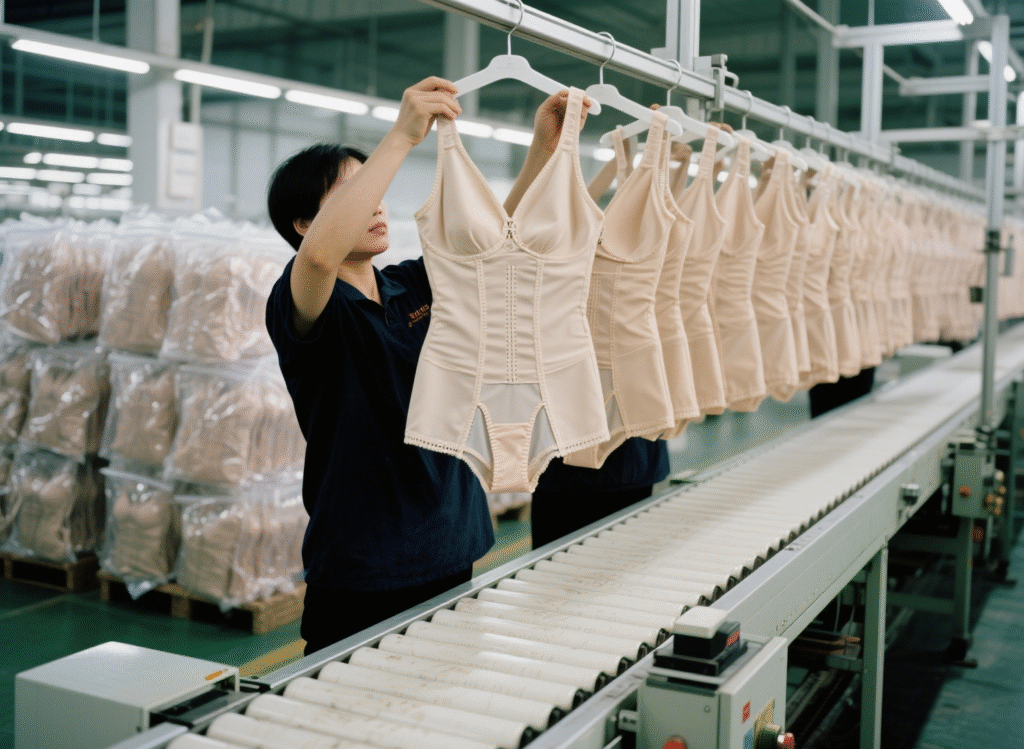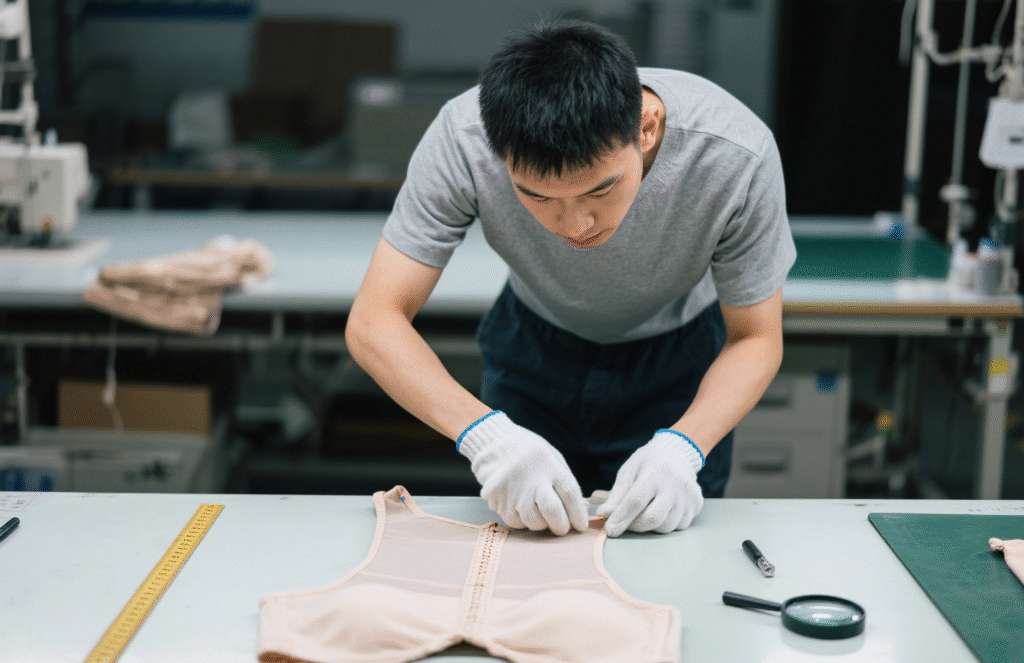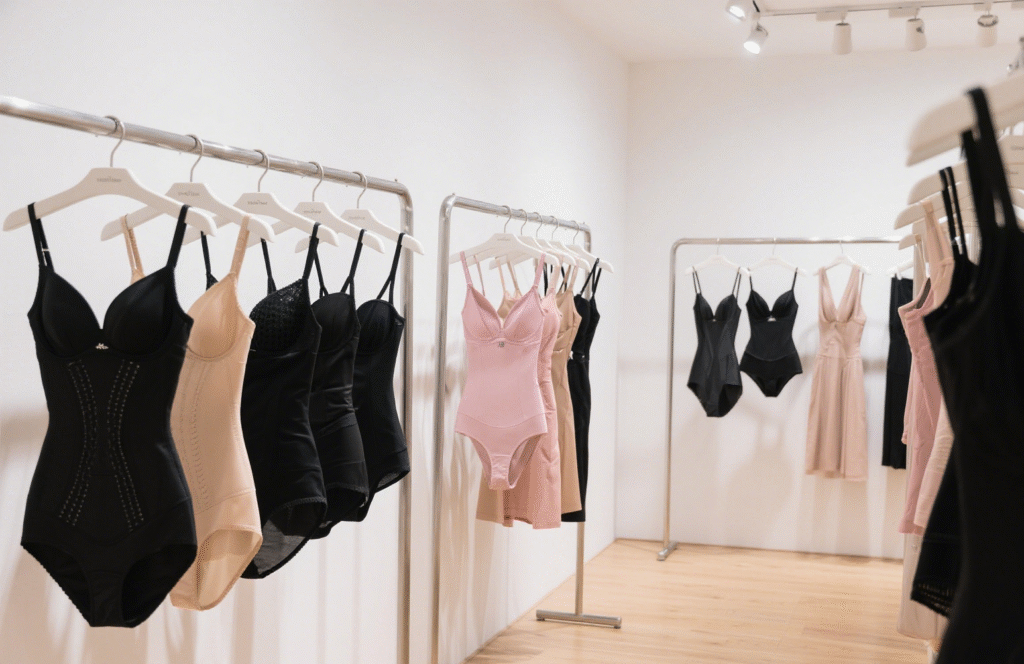In-Depth Analysis of Global Shaping Shapewear Market Trends in 2025 — Opportunities and Challenges
In-Depth Analysis of Global Shaping Shapewear Market Trends in 2025 — Opportunities and Challenges
Driven by the dual forces of upgrading consumer concepts and diversified aesthetics, the global shaping underwear market is undergoing unprecedented changes. As a leading manufacturer of shaping underwear, we track global market data and observe industry trends to identify key market trends for 2025, helping our partners accurately grasp business opportunities.

- Market Size Continues to Expand, with Significant Regional Demand Differentiation
According to the latest data from industry research institutions, the global shapewear market size is expected to exceed 80 billion U.S. dollars by 2025, with a compound annual growth rate of 7.2%. North America and Europe remain the core consumer markets, contributing over 50% of sales, but emerging markets such as Asia and Latin America are growing more rapidly — Southeast Asia is projected to grow at an annual rate of 12%, while Latin American countries like Brazil and Mexico are seeing a year-on-year increase of 9.5%.
From a consumer perspective, the North American market prefers multifunctional shapewear designed for “daily commuting + body shaping,” with high demands for breathable fabrics and invisible designs; The European market emphasizes “sustainability,” with eco-friendly shapewear commanding a 15%-20% premium over standard products; the Southeast Asian market prefers cost-effective basic styles and has strong demand for size inclusivity (sizes XXL and above account for 38% of sales).

- Three Core Trends Reshaping the Market Landscape
1. Functional Diversification: From “Shaping” to “Lifestyle Adaptation”
The “strong compression” of traditional shapewear is being phased out, with mainstream products in 2025 emphasizing “light shaping + scenario adaptation.” For example:
(1) Sports shapewear incorporating moisture-wicking fabrics has seen a 40% year-on-year increase in sales among fitness enthusiasts in Europe and the US;
(2) Bridal shapewear with removable straps to accommodate different neckline styles has seen a threefold increase in demand during the wedding season (April to June each year).

2. Material Innovation: Environmental Sustainability and Comfort Become Key Competitive Factors
As consumers increasingly prioritize “healthy wearing,” fabric technology is evolving:
(1) Eco-friendly materials like recycled nylon and organic cotton have a 35% market penetration rate in Europe, with B2B customer procurement volumes growing by 28% year-over-year;
(2) 3D honeycomb weave fabrics, which offer 60% improved breathability, have become a core selling point for summer bestsellers in North America;
(3) Bio-based elastic fibers (such as soy protein fibers) ensure shaping power while reducing skin sensitivity issues, with over 60% acceptance in the Japanese and South Korean markets.
3. Channel Transformation: Social Commerce and Private Domain Traffic Drive Growth
“Scenario-based product recommendations” on platforms like TikTok and Instagram Reels have become key drivers of sales:
(1) Short videos tagged with #ShapewearHacks have accumulated over 5 billion views, directly driving a 200% increase in searches for related products;
(2) Offline retail is transitioning to “experiential retail,” with European and American department store chains setting up “shapewear customization consultation zones,” resulting in a 40% increase in average transaction value.

- Three Core Opportunities
1. Precisely align with regional demand to create a differentiated supply chain
For the Southeast Asian market’s demand for “high cost-effectiveness + plus-size options,” optimize production processes to reduce the cost of basic styles; develop dedicated production lines using eco-friendly fabrics for European clients, and enhance product premium through GOTS certification; build capacity for 3D weaving technology for the North American market to address seasonal order fluctuations.
2. Partner with emerging channels to capture traffic dividends
Collaborate with social commerce agencies to develop “influencer-inspired” custom designs, using pre-sale models to reduce inventory risks; offer brands “small-batch flexible production” services (with minimum order quantities as low as 500 pieces) to swiftly respond to viral product demands.
3. Preemptively Position in Niche Segments to Build Competitive Barriers
Focus on vertical markets such as postpartum recovery and sports shaping, collaborating with fabric suppliers to develop exclusive materials; For scenarios such as weddings and holiday seasons, launch “pre-sale + rapid reorder” services to shorten delivery cycles to within 7 days.

- Challenges to Watch Out For and Response Strategies
1. Fluctuations in raw material prices
It is recommended to sign long-term procurement agreements with factories to lock in raw material costs; simultaneously, maintain 2-3 alternative fabric options to avoid supply disruptions.
2. Inventory Pressure and Market Changes
As fashion trends evolve rapidly (e.g., color preferences shifting from “skin tones” to “Moody colors”), we recommend that B2B clients adopt a “core styles + seasonal limited editions” strategy — maintaining a 3-month inventory for core styles and controlling production volumes for limited editions through pre-sale models.
- Conclusion
In the 2025 shapewear market, “precision matching of demand” and “rapid response to changes” will become the core of competition. As a source factory with 12 years of production experience, we have completed production line upgrades and established a flexible supply chain capable of 72-hour rapid prototyping and 15-day bulk delivery. Whether it’s customizing sustainable products or providing cost-effective solutions, we can meet diverse needs through our modular production system. For customized solutions, please feel free to contact our account managers at any time.
